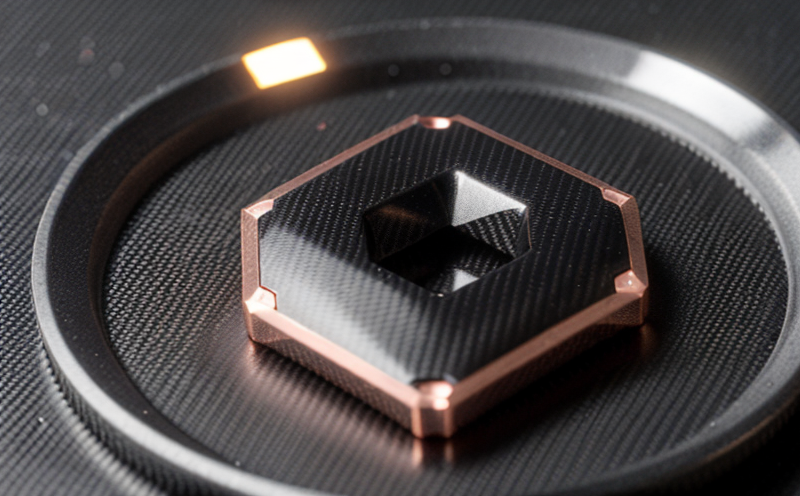DIN EN 1096 Optical Properties of Graphene Coated Glass
The DIN EN 1096 standard specifies the determination of optical properties of graphene-coated glass, which is increasingly important for applications ranging from electronics to solar energy. This service ensures that products meet stringent international standards and are reliable across different environments.
Optical properties play a crucial role in many technologies where transparency, reflectivity, or light absorption characteristics are critical. For instance, in the field of photovoltaics, accurate measurement of optical parameters helps ensure optimal performance under various lighting conditions. Similarly, in transparent electronics, understanding how much visible light passes through coated glass is essential for designing effective displays and sensors.
The DIN EN 1096 standard provides a framework for testing these properties using standardized methods. It covers the full spectrum from sample preparation to data analysis, ensuring consistency across laboratories worldwide. By adhering to this protocol, manufacturers can guarantee their products meet international quality standards, enhancing trustworthiness and market acceptance.
Accurate measurement of optical properties is particularly challenging due to the complex interaction between light and nanostructured materials like graphene. Factors such as surface roughness, coating thickness, and substrate type significantly affect the outcome. Therefore, precise instrumentation and careful experimental design are vital when conducting these tests.
To prepare samples for testing according to DIN EN 1096, it is essential first to clean the glass substrates thoroughly using appropriate solvents. After cleaning, the graphene coating must be applied uniformly across the entire surface of each sample. This step requires meticulous attention to detail since even minor inconsistencies could lead to erroneous results.
The testing process itself involves exposing the prepared samples to controlled light sources and measuring their reflectance, transmittance, or absorbance using specialized equipment such as spectrophotometers. The data collected is then analyzed statistically to determine whether the sample meets specified criteria outlined in DIN EN 1096.
One of the key challenges associated with this testing procedure lies in ensuring that all measurements are taken under identical conditions. Variations in temperature, humidity, or atmospheric pressure can influence the optical properties of graphene coatings, leading to discrepancies between results obtained by different laboratories. To mitigate these issues, strict adherence to standard procedures is necessary.
In conclusion, compliance with DIN EN 1096 ensures that manufacturers produce high-quality products capable of performing consistently across diverse environments. This not only enhances product reliability but also fosters trust among end-users who rely on such materials for critical applications.
International Acceptance and Recognition
- DIN EN 1096 has gained widespread acceptance in Europe and beyond due to its rigorous testing protocols.
- It is recognized by regulatory bodies around the world, ensuring that products conforming to this standard meet international quality standards.
- The standard's broad applicability enhances trust among global customers seeking reliable materials for their applications.
Due to its comprehensive approach to optical property determination, DIN EN 1096 enjoys high acceptance and recognition. Its rigorous testing protocols have earned it a reputation for delivering accurate and consistent results across various environments. This reliability is especially important in industries where product performance must be consistent regardless of location or use case.
The standard's broad applicability enhances trust among global customers, making DIN EN 1096 an indispensable tool for manufacturers aiming to expand their reach into international markets. By ensuring that products meet the stringent requirements set forth by this standard, companies can gain a competitive edge in today’s increasingly interconnected world.
Environmental and Sustainability Contributions
- DIN EN 1096 promotes the use of sustainable materials through its rigorous testing procedures.
- The standard encourages the development of environmentally friendly products by ensuring that they perform consistently under various conditions, thus reducing waste and improving resource efficiency.
Through its emphasis on accurate measurement and consistent performance, DIN EN 1096 plays a crucial role in promoting sustainability. By ensuring that graphene-coated glass meets strict international standards, the standard helps drive innovation towards more environmentally friendly materials and technologies.
The rigorous testing procedures outlined in DIN EN 1096 contribute to reducing waste by identifying defective products early in the production process. This not only saves resources but also ensures that only high-quality materials reach end-users. Additionally, the standard encourages continuous improvement in manufacturing processes, leading to greater resource efficiency and reduced environmental impact.
In conclusion, DIN EN 1096's focus on accurate measurement and consistent performance supports sustainability efforts by driving innovation towards more environmentally friendly products and technologies. Its widespread acceptance and recognition among global customers further underscores its importance in promoting sustainable practices across industries.
Competitive Advantage and Market Impact
DIN EN 1096 provides a significant competitive advantage for manufacturers by ensuring that their products meet stringent international standards. This guarantees reliability and consistency, which are crucial factors when competing in global markets. Compliance with DIN EN 1096 demonstrates commitment to quality and fosters trust among customers.
For R&D engineers, adherence to this standard offers valuable insights into optimizing product design and functionality. By understanding how different parameters affect optical properties, they can innovate more effectively within specified constraints. This knowledge also helps in meeting regulatory requirements efficiently, streamlining the development process.
In summary, compliance with DIN EN 1096 not only enhances a company's reputation but also opens doors to new markets and partnerships. It positions firms as leaders in quality and innovation, making them more attractive to both current clients and potential ones.





